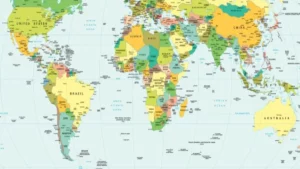Seeing the northern lights in their full splendour is near the top of many travellers’ bucket lists. Many people are unaware that the Southern Hemisphere has its own spectacular atmospheric light show. The aurora australis, often known as the southern lights, are the aurora borealis’ southern cousins. The southern landmasses, such as Tasmania, New Zealand, and Antarctica, provide the greatest views.
Here’s everything you need to know about the Southern Lights (Aurora Australis), including when to look for them, where to look for them, and how to see them.
- Auroras
- When’s the Best Time to See These Auroral Lights?
- The Northern And The Southern Lights (Aurora Australis)
- What are Southern Lights (Aurora Australis)?
- High Energy Collisions
- Many Different Colors
- Best Time to See the Southern Lights (Aurora Australis)
- Where to See the Southern Lights (Aurora Australis)?
- Planning Your Trip
- Final Thoughts
- FAQ Section
Auroras
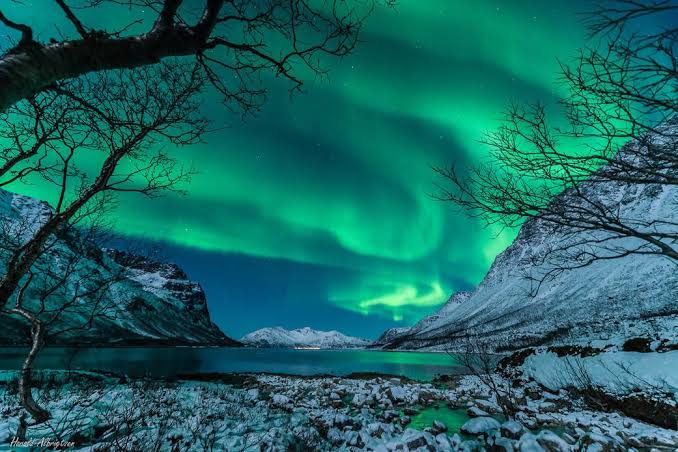
Auroras are caused by solar wind-induced disturbances in the magnetosphere. The trajectories of charged particles in the magnetospheric plasma are altered by these disturbances. Electrons and protons, in particular, precipitate in the upper atmosphere (thermosphere/exosphere). The ionisation and excitation of atmospheric constituents that results produces light of various colours and complexity.
The amount of acceleration imparted to the precipitating particles determines the shape of the aurora. These occur in bands around both polar regions. One can find these on most of the planets in the Solar System, as well as some natural satellites, brown dwarfs, and even comets.
The northern lights are known as aurora borealis in the Arctic Circle. Meanwhile the southern lights are known as aurora australis in the Antarctic Circle. When electrically charged particles from solar winds enter the Earth’s atmosphere and interact with gases in the atmosphere, these dramatic and colourful lights result.
When’s the Best Time to See These Auroral Lights?
Although auroras and auroral activity can be seen at any time of year, day or night, the best time to see them is during the winter months at night. This is due to the fact that areas near the North and South Poles have longer periods of darkness during the winter.
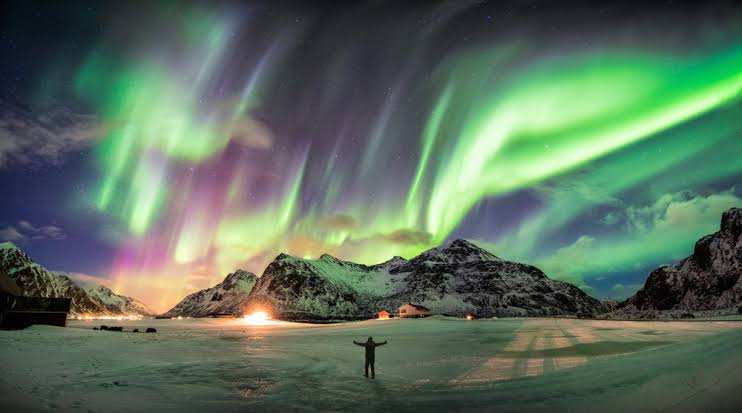
Auroras are best seen around midnight, when the sky is darkest, on a clear night away from the city. Artificial or natural light sources, such as the full Moon, can make it difficult to see the aurora.
The Northern And The Southern Lights (Aurora Australis)
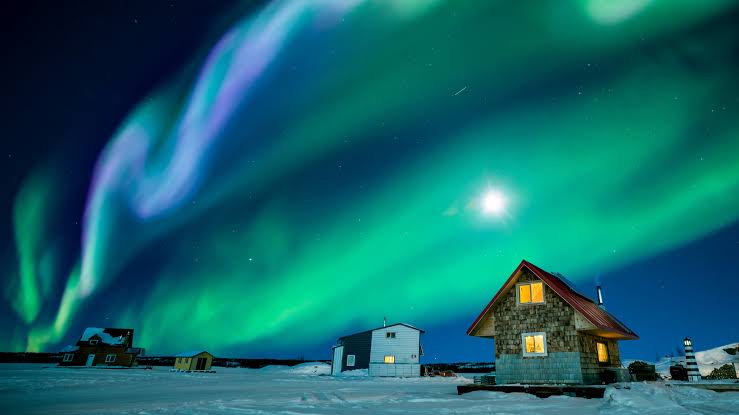
The Northern and Southern Lights are both aurorae, but due to the asymmetry between the North and South Poles, they are not mirror images of each other. We won’t go into detail here, but it’s worth noting that the Northern and Southern Lights appear in different shapes and patterns as a result of this asymmetry.
The Southern Lights are just as, if not more, impressive than their northern counterpart, despite being more elusive. Going aurora spotting in the Southern Hemisphere with your partner is all the more memorable and worthwhile because of its under-the-radar status!
The Southern Lights, in contrast to the Northern Lights, are more vibrant, with shades of orange, pink, purple, and gold being common.
What are Southern Lights (Aurora Australis)?
The aurora australis is the southern hemisphere equivalent of the Northern lights. It is also known as the southern lights or southern polar lights. The aurora australis appears as a curtain of light, a sheet, or a diffuse glow in the sky; it is usually green, but it can also be red or other colours.
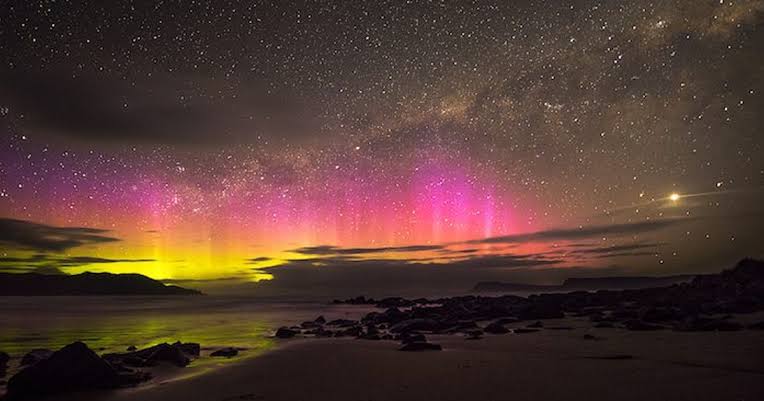
The aurora australis is brightest in an oval centred on the south magnetic pole, just like its northern sibling. This is due to collisions in the upper atmosphere between energetic electrons (and sometimes protons) and atoms and molecules. The magnetic fields in the solar wind and the Earth’s magnetic field accelerate the electrons. The movements are intricate, but the electrons effectively circle around the Earth’s magnetic field lines and meet or land near where those lines become vertical.
Antarctica is by far the best place in the southern hemisphere to see aurorae! Oh, and at night, as well. Aurora australis can be seen in
- New Zealand (especially the South Island),
- southern Australia (especially Tasmania), and
- southern Chile and Argentina when the solar cycle is near its maximum (sometimes in South Africa too).
High Energy Collisions
While the Earth’s magnetosphere protects it from the solar wind’s highly charged particles, when the conditions are right, these particles can enter the atmosphere at the two poles, colliding and interacting with gas molecules and atoms.
The energy from the solar winds’ electrons is transferred to electrons in the atoms of various atmospheric gases when such collisions occur. These excited atoms then release any remaining energy as light.
Between 50 miles (80.46 kilometres) and 200 miles (321.87 kilometres) above the Earth’s surface, auroral light displays are most common.
Many Different Colors
The type of gas molecules, their electrical state at the time of collision, and the type of solar wind particles they collide with all influence the colour of the light released. Nitrogen atoms produce blue or purplish-red coloured light, whereas oxygen atoms produce yellow-green or red coloured light.
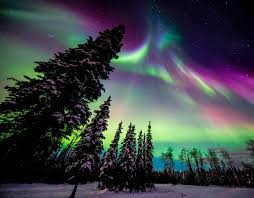
Multicolored auroras are caused by a mixture of gases in the Earth’s atmosphere. Aurora displays may be both static and dynamic, changing form and colour and pulsating in the sky, due to solar wind particles continually entering the Earth’s atmosphere and reacting with gas atoms.
Best Time to See the Southern Lights (Aurora Australis)
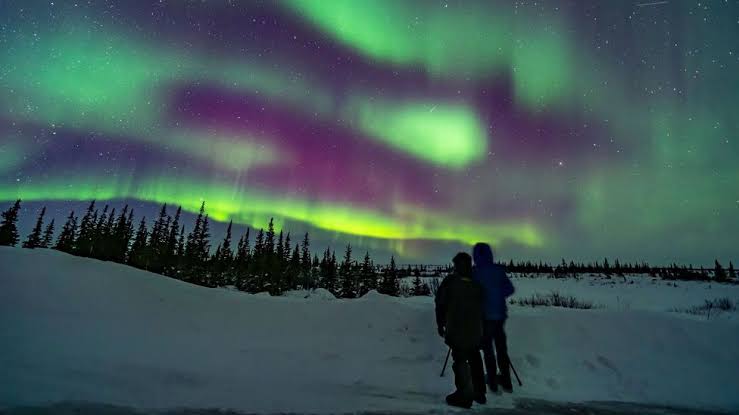
From March to September, when the nights are longer, the Southern Lights are most visible. One of the best times to see the lights is around the spring equinox (September 22). Dark, clear nights, like their northern counterparts, are essential for catching the most vibrant sightings of the Southern Lights.
Some say midnight is the best time to camp, but we recommend setting up camp much earlier to avoid missing any early or premature sightings. It’s worth noting that, unlike the Northern Lights, which are affected by seasonal light changes, the Southern Lights can be seen at any time of year!
Although sightings have been reported in the summer months of December, January, and February, the winter months, with their longer and darker nights, provide the best opportunities to see the spectacular light displays.
| No. | Where to See | When to See |
| 1. | Southern Island, New Zealand | Winter months (March – September) |
| 2. | Tasmania, Australia | Odds are best in autumn and winter when the nights are longer (June to August, peaking in July) |
| 3. | Falkland Islands, UK | During the darkest months, between May and August |
| 4. | Antartica | Antarctic winter lasts from March to September. Cruises are only available from November to March. Thus, March is the best time. |
| 5. | Patagonia | April to August is the general aurora window, but May to July offers higher chances of catching the spectacular displays. |
| 6. | Victoria, Australia | During winter, March – September |
| 7. | South Georgia Island | The best time to see the aurora is in March |
Where to See the Southern Lights (Aurora Australis)?
The Southern Lights are visible from high southern latitudes in Australia, New Zealand, South America, and, of course, Antarctica, and are most frequently seen in the auroral zone. Because of their accessibility, proximity, and abundance of breathtaking natural landscapes, Australia and New Zealand are extremely popular travel destinations – chasing the Southern Lights is no longer a pipe dream!
Here are the best places to see the Southern Lights if you want to get off the beaten path and witness one of nature’s most spectacular displays!
Southern Island, New Zealand
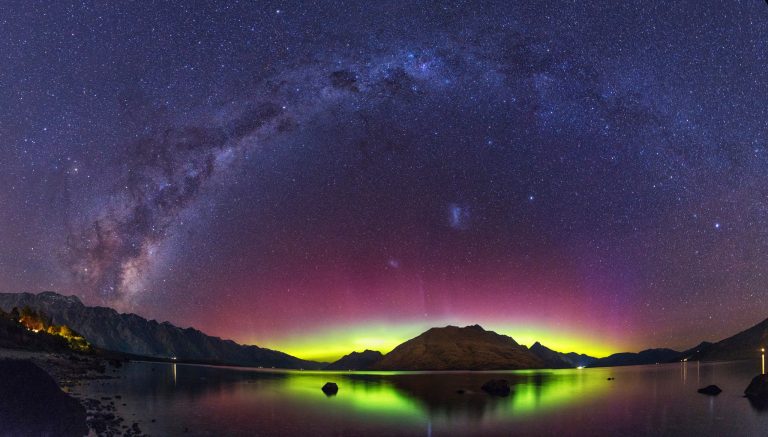
One of the best places to see the Southern Lights is New Zealand. Its southern location, combined with low light pollution, makes it ideal for an aurora-themed trip. Not to mention the abundance of natural beauty that begs to be explored!
When : From March to September, you can see both the Southern Lights and the Milky Way, providing an out-of-this-world experience.
Where : Stewart Island, Lake Tekapo, Dunedin, Invercargill, The Catlins, Queenstown, and Christchurch are all hotspots for aurora spotting on the Southern Island.
Getting there: Queenstown is the most affordable city to fly into on the Southern Island (and Auckland on the North).
How: Spend the night camping or in a remote cabin or lodge. Prefer roadtripping in a Jucy campervan. It allows you to sleep with the stars at your doorstep or you can rent a car. You could also go on a stargazing tour during a period of high solar storm activity. Aside from the Southern Lights, there’s plenty of natural beauty to behold at Lake Wakatipu, from above in a helicopter tour, and while cruising through the famous Milford Sound.
Tasmania, Australia
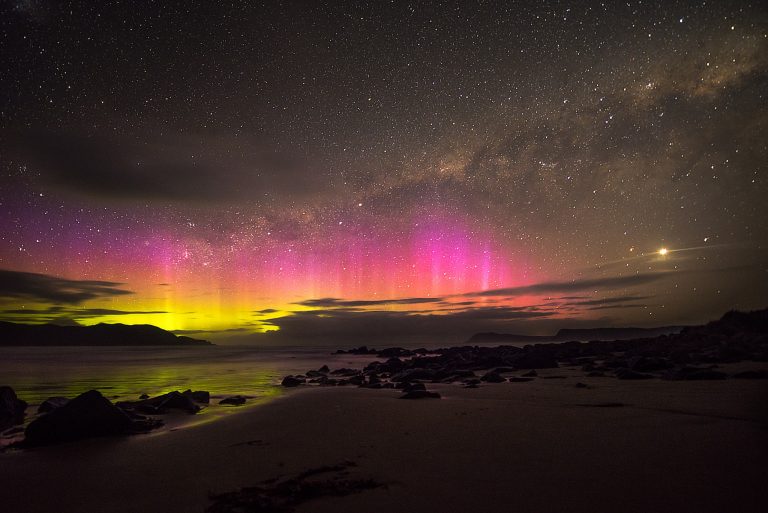
Tasmania, with its gleaming white sand beaches, hopping wallabies (mini kangaroos! ), and some of the purest air on the planet, is one of Australia’s most underappreciated regions. This is the furthest south one can go in Australia, and it offers the best chances for aurora activity. From the mainland, it’s surprisingly inexpensive to get there. Even if you don’t see the aurora, the stunning scenery and adorable wildlife make the trip worthwhile.
When: It’s one of the few places on the planet where you can see the aurora all year, but visiting Tasmania during the winter (June to August, peaking in July) will increase your chances of seeing the lights simply because it’s darker for longer.
Where: The aurora can be seen almost everywhere in Tasmania. Seek out views to the south that are unobstructed. Mount Nelson, Mount Wellington, Rosny Hill, and Seven Mile are just a few examples of places to visit in the Southern Peninsula (south of Hobart).
Getting There: The largest city is Hobart, followed by Launceston. Jetstar and Tiger are two low-cost airlines that fly here.
How: Camping, camping in a campervan, road tripping, or staying in a cabin or lodge are all options. If the chances of seeing the aurora are good, consider taking a stargazing tour. While you’re in town, visit Port Arthur for breathtaking views, Bruny Island for gourmet wines and cheeses. Or perhaps embark on a multi-day tour to see the best of Tasmania.
Falkland Islands, UK
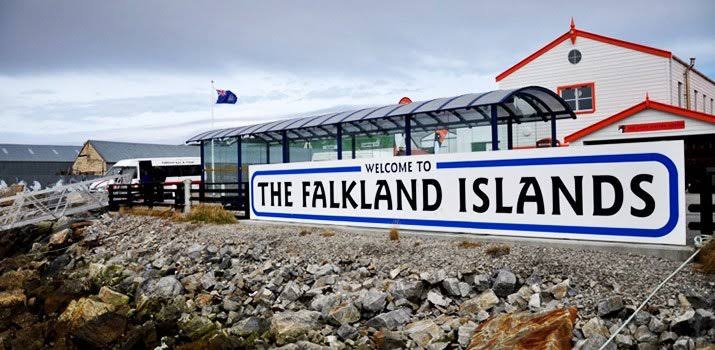
This small group of islands, 400 miles off the coast of Argentina, is home to penguins, elephant seals, and aurora. The island was dotted with snowcapped peaks and stretches of white sand beaches. Despite its remoteness, the Falklands are rapidly attracting tourists drawn by its breathtaking scenery and wildlife.
When: Its’ lack of urban development (it has a population of only 3400 people!) makes it incredibly easy to get away from the city lights and find dark skies between May and August. The Falkland Islands continue to be one of the best places to see the Southern Lights.
Where: The aurora can be seen in all parts of these southerly islands.
Getting There: From Argentina, take a flight to Port Stanley Airport (PSY). Traveling to the Falkland Islands, however, can be a long and expensive journey, with stops in Oxfordshire, the United Kingdom, or Santiago, Chile.
How: Simply take a walk outside! You can book accommodation in advance on the internet. Spend your vacation with the snow-capped peaks and stretches of white sand beaches, and sleep under the stars.
Antarctica

Antarctica is quickly attracting visitors due to its pristine state. Turquoise glaciers, waddling penguins, and stunning snowy hills inhabit the eerily barren landscapes. This part of the world truly does appear to be otherworldly. It costs a lot of money and takes a lot of effort to get here, but it is undeniably a once-in-a-lifetime opportunity.
When: The Antarctic winter lasts from March to September, but due to bad weather, cruises are only available from November to March. As a result, March is your best bet.
Where: You’ll be limited to the areas of your cruise/tour, but aurora can appear anywhere.
Getting There: Argentina (Ushuaia), Chile (Valparaiso and Punta Arenas), Uruguay (Montevideo), Australia, and New Zealand all have cruises to Antarctica. Because of the harsh weather, Antarctic cruises are only available from October to March, so plan your trip for October or March to see the best of the Southern Lights!
How: From the comfort of your cruise ship’s deck. However, because of the lack of light pollution, year-round sightings have been reported, so visiting Antarctica at any time of year could potentially yield promising results.
South Georgia Island
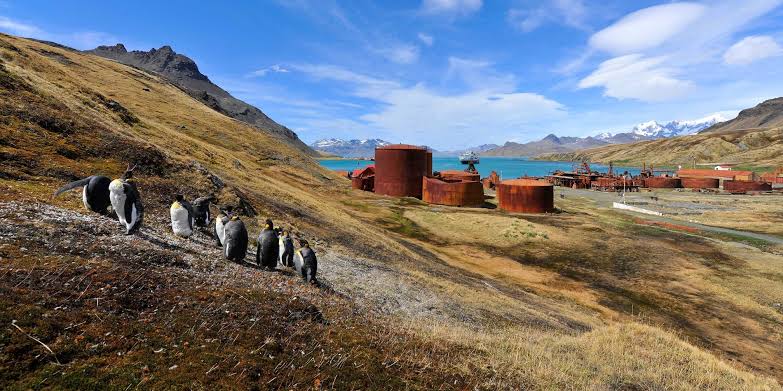
South Georgia, the world’s southernmost island, is stunningly barren. Except for the odd elephant seals and penguins, there are no permanent residents here, as there are in much of Antarctica. White snowcapped peaks contrast with brilliantly blue glaciers; this place is a visual feast, especially if you can spot the Southern Lights!
When: The Antarctic winter (March–September) is the best time to visit, but cruises only go during this time. The best time to see the aurora is in March.
Where: Anywhere on the island’s outskirts.
Getting There: The only way to get there is by cruise ship. From Chile, Argentina, or Uruguay, cruises are available. Many Antarctica cruises include a stop on South Georgia Island.
How: From your cruise ship’s deck, you can see it.
Planning Your Trip

When, Where and How to See the Southern Lights! – Download
Have Patience, but be Ready To Bolt at Any Moment
If you think the Northern Lights are unpredictable and elusive, wait until you see the Southern Lights! The elusiveness, on the other hand, is part of the thrill of chasing the lights for many. Even after the predicted timing has passed, the lights may take some time to appear, so camping for only 15 minutes in the cold is unlikely to yield any viewing results.
Mother Nature’s unpredictability also means that the aurora can appear as soon as 30 minutes after predictions are made, so be ready to leave at any moment!
Travel for the Experience, Not Just to See The Southern Lights
Although seeing the Southern Lights can be a highlight of your trip, it should not be your only activity. Because the Southern Lights are more elusive than their northern counterparts, you may just be unlucky and not see them at all due to weather conditions.
If you’re planning a trip solely to see the Southern Lights, be prepared to be disappointed! Plan a bulletproof itinerary that includes a variety of other activities to ensure that the country you are visiting is also one that you are interested in.
Plan Ahead Of Time and Thoroughly
Prepare for the possibility that you won’t be able to see the Southern Lights because they haven’t appeared for several nights in a row despite perfect weather (i.e. clear, dark Kp 4 nights). This is where your contingency plans will come in handy.
Early planning and booking of flights, lodging, transportation, tours, and other expenses can help you save money on this trip, especially if you travel during peak Southern Lights season.
However, because the Southern Lights are highly variable and weather dependent, planning too far ahead of time can result in you missing them. The suggested travel times listed above are only suggestions.
Final Thoughts
We understand how difficult and time-consuming it is to plan a trip to an unknown destination, particularly in South America or Antarctica. As previously stated, travelling to places like Patagonia and the Falkland Islands necessitates meticulous planning due to the fact that domestic flights to these locations do not operate on a daily basis. Imagine travelling such a long distance only to miss the week’s only flight!
Even planning trips to “familiar” locations like Australia and New Zealand can be intimidating, especially if you want to catch the Southern Lights. Beyond seeing the Southern Lights, there are a plethora of activities and sights to see, so make sure to schedule your days and nights wisely to get the most out of your trip!
Plan on staying in the area for at least 5 days because the lights can appear for up to 3 nights in a row before disappearing for a couple of days. Though not seeing the Southern Lights may be frustrating and disappointing, plan your trip in such a way that the entire experience in a faraway country is still fruitful and meaningful.
Keep visiting Podium School blog for more such articles!
FAQ Section
What is the best time of year to see the Southern Lights?
On dark, clear nights, the Southern Lights are best seen. Because the nights are longer in the winter, it is generally the best time to visit. This is usually between March and September in the Southern Hemisphere.
Are the northern and southern lights the same?
A natural electric phenomenon that produces bright and colourful light displays in the sky is known as an aurora. The northern lights are known as aurora borealis in the Arctic Circle, while the southern lights are known as aurora australis in the Antarctic Circle.
Can you see the aurora from Melbourne?
In the Melbourne metropolitan area Although there are several aurora viewing locations closer to Melbourne, light pollution levels are higher. Because the coast near Melbourne overlooks Port Phillip Bay, you might be lucky enough to see the southern lights if you visit the sanctuaries and smaller communities.
How do you photograph Southern Lights?
Shutter speed at 18 seconds, ISO at 4000, and aperture at the lowest possible, preferably f2. 8 to f2 to let in as much light as possible are good starting points for your camera settings. Set your camera lens to the lowest possible aperture if it doesn’t go down to f2. 8.
What does Aurora Australis look like to naked eye?
Simply put, the majority of auroras are green in colour. That is the quickest and most scientifically correct response (there are other colours of the aurora but green is the most commonly observed and relevant colour to this question). However, our eyes do not always see it as green.
What is the most common Aurora color?
It’s extremely uncommon to see an aurora that isn’t green. When most people think of aurora, they think of the colour green.
Share with your friends





